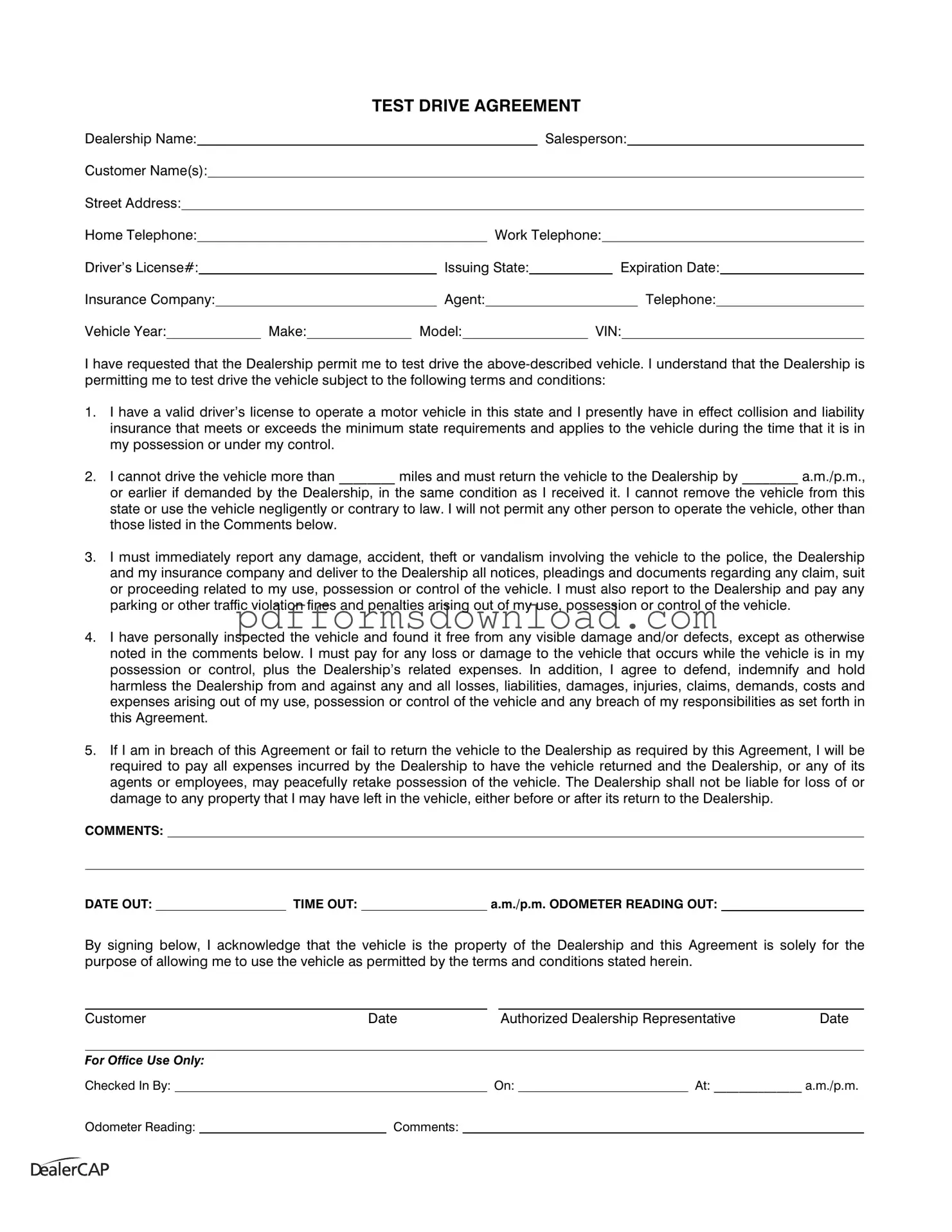What information do I need to provide on the Test Drive form?
You will need to provide your personal details, including your name, address, and contact numbers. Additionally, you must include your driver’s license number and the issuing state, along with the expiration date. Information about your insurance company and agent is also required. Lastly, you will specify the vehicle details, such as the year, make, model, and VIN.
What are the requirements for taking a test drive?
To take a test drive, you must have a valid driver’s license and active collision and liability insurance that meets state requirements. The insurance must cover the vehicle while it is in your possession. You will also need to agree to the terms outlined in the Test Drive Agreement, which include returning the vehicle in the same condition and within the specified mileage and time limits.
How far can I drive the vehicle during the test drive?
The Test Drive Agreement will specify a maximum distance you can drive the vehicle. It is essential to adhere to this limit to ensure compliance with the dealership’s policies. Exceeding the allowed mileage may result in additional charges or penalties.
What should I do if there is an accident or damage to the vehicle?
If you experience any damage, accident, theft, or vandalism while driving the vehicle, it is crucial to report it immediately. Notify the police, the dealership, and your insurance company. You must also provide the dealership with any related documents or notices. Prompt reporting helps ensure proper handling of the situation and can protect you from further liabilities.
Am I responsible for damages to the vehicle during the test drive?
Yes, you are responsible for any loss or damage to the vehicle while it is in your possession. This includes covering the costs of repairs and any related expenses incurred by the dealership. It is important to inspect the vehicle before driving and note any existing damages in the comments section of the form.
What happens if I fail to return the vehicle on time?
If you do not return the vehicle as specified in the agreement, you may be required to pay for any expenses the dealership incurs to retrieve the vehicle. Additionally, dealership representatives have the right to peacefully reclaim the vehicle. This is to ensure that all test drives are conducted responsibly and within the agreed terms.
Can someone else drive the vehicle during the test drive?
Only individuals listed in the comments section of the Test Drive Agreement may operate the vehicle. You must not permit anyone else to drive it. This policy helps maintain accountability and ensures that all drivers meet the necessary requirements for safety and insurance coverage.
